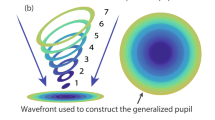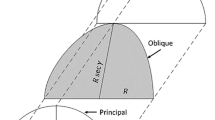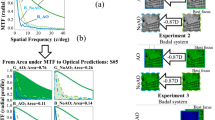Abstract
IN Newton's “Opticks” (editions of 1704, 1717 and 1721 and the subsequent editions and translations, so far as we have been able to ascertain) an erroneous condition is given for the proportion α of the radii of a symmetrical thin triplet (the inner lens being of water) in order to correct the system for spherical aberration for distant objects. Calling the curvature of the first and second surface R1 and R2 respectively, the formula gives α3 = (R1/R2)3 = (KK–KI)/(RK–RI), where R/I = ng, the refractive index of the two outer (glass) lenses, and R/K = nw, the refractive index of the inner (water) lens. The fraction can be simplified to K/R, and gives a large amount of under-correction.
This is a preview of subscription content, access via your institution
Access options
Subscribe to this journal
Receive 51 print issues and online access
$199.00 per year
only $3.90 per issue
Buy this article
- Purchase on Springer Link
- Instant access to full article PDF
Prices may be subject to local taxes which are calculated during checkout
Similar content being viewed by others
Author information
Authors and Affiliations
Rights and permissions
About this article
Cite this article
VAN HEEL, A. Newton's Work on Geometrical Optical Aberrations. Nature 171, 305–306 (1953). https://doi.org/10.1038/171305a0
Issue Date:
DOI: https://doi.org/10.1038/171305a0
Comments
By submitting a comment you agree to abide by our Terms and Community Guidelines. If you find something abusive or that does not comply with our terms or guidelines please flag it as inappropriate.



